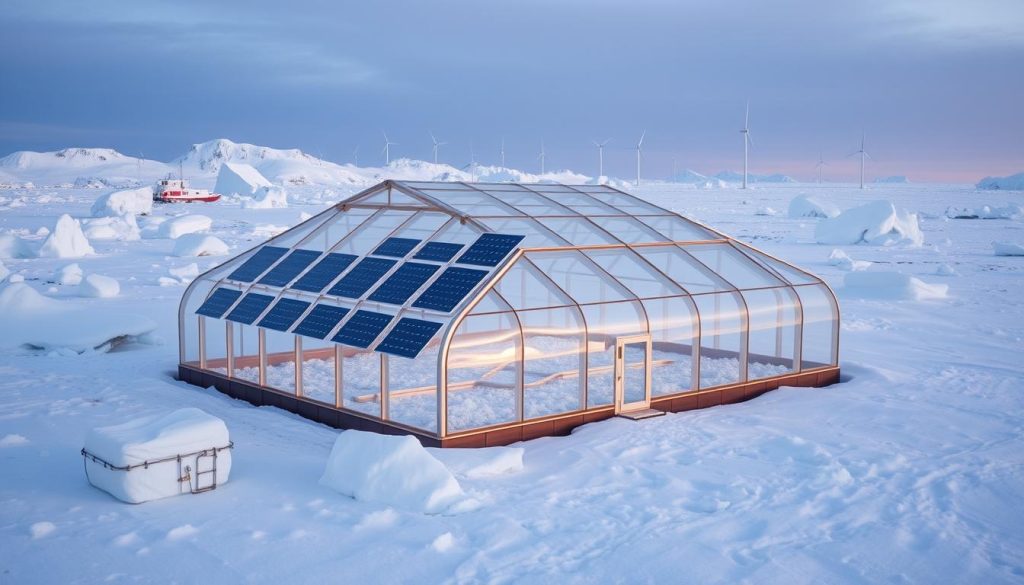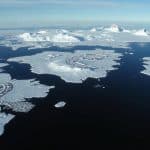The world is fighting climate change. This makes eco-friendly businesses in Antarctica crucial. The harsh environment requires new, sustainable ideas to protect the area. To start such a business, one must understand the Antarctic Treaty System. This system balances business with preserving the land. By focusing on the environment, businesses can make a big impact and attract careful customers.
The Importance of Sustainable Practices in Antarctica
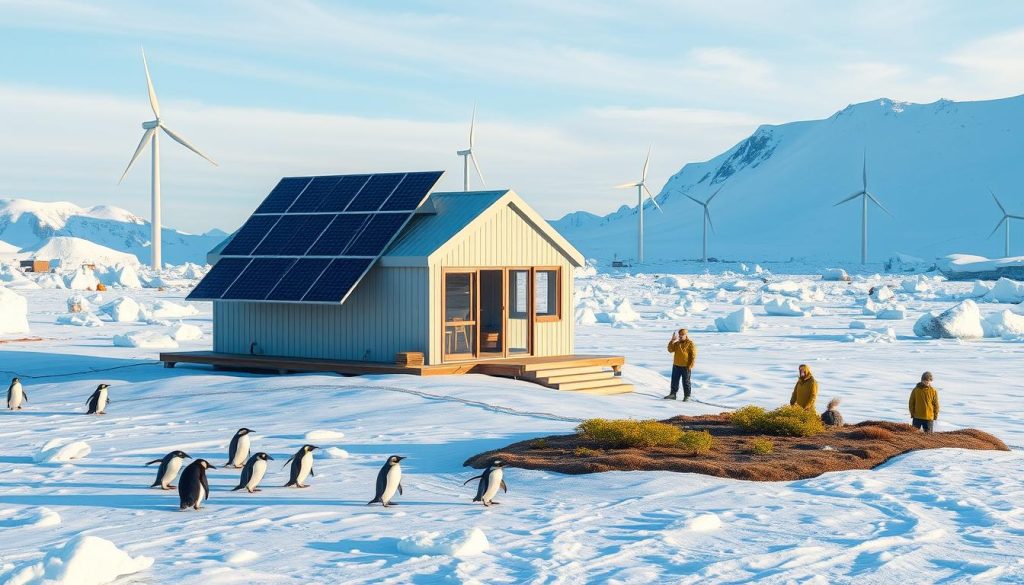
The fragile Antarctic ecosystem needs urgent protection. Climate change presents severe risks. Sustainable actions are vital for any project here. Rising temperatures cause ice to melt. This changes landscapes and harms the homes of many species. So, taking care of the environment is key for businesses to lessen their harm on nature.
Studies by the Antarctic and Southern Ocean Coalition show the big impact of sustainable actions. They help protect the rich variety of life. Such actions include cutting down waste, using renewable resources, and saving energy. Doing this helps businesses save the planet. It also improves their image, making customers more aware of eco-issues.
People prefer to buy from firms that care for the environment. They expect businesses to act now to protect our world. So, adopting green practices can give companies an edge. It shows they share their customers’ values of looking after the Earth.
Understanding the Unique Environment of Antarctica
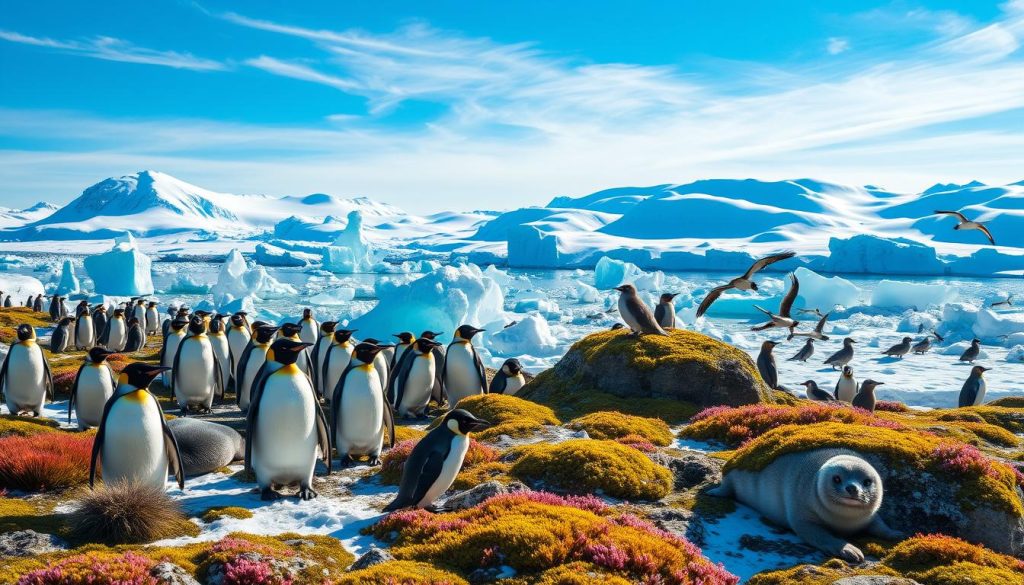
The Antarctic ecosystem is both strikingly beautiful and extremely challenging. Its climate creates severe temperature swings. During winter, it can get freezing cold, whereas summers might be briefly warm. Businesses need to adapt quickly to these conditions for success.
Wind conditions add to the challenge, often leading to blizzards that stop activities for days. Companies must plan carefully for these weather issues. They need to think about how it affects supply chains and travel. This situation requires a balance between human operations and the natural world.
Antarctica’s wildlife, including penguins, seals, and birds, is key to the region. They depend on their environment to survive. Companies working here need to know how their actions could hurt these animals and their homes. Research shows even small changes can have big effects on the ecosystem.
Understanding these issues is crucial for businesses. It pushes them towards sustainable practices. Ensuring the well-being of wildlife while chasing business goals is essential here.
Legal Considerations for Establishing a Business in Antarctica
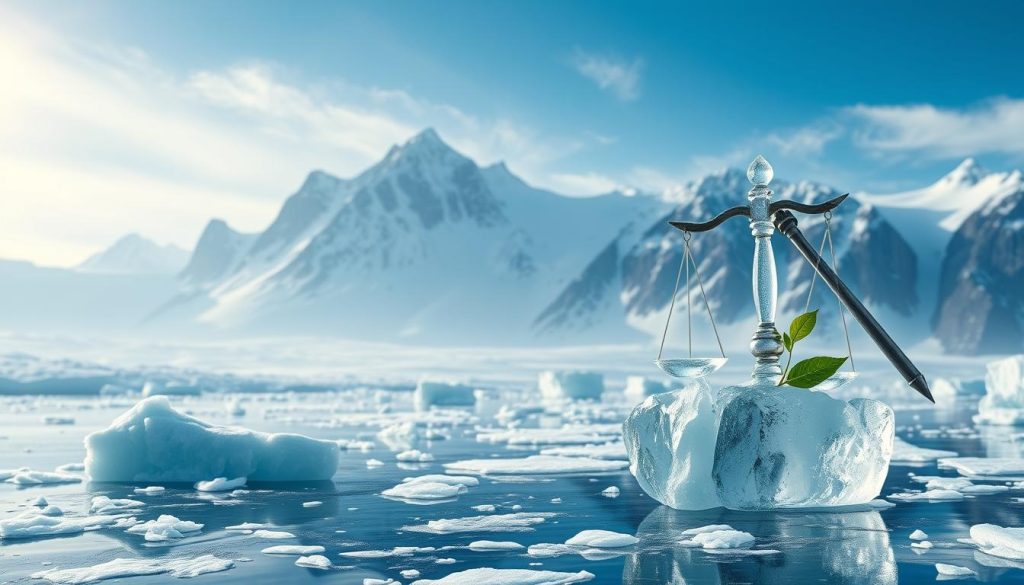
Starting a business in Antarctica means knowing the legal rules for this special place. The Antarctic Treaty is key. It makes sure businesses protect the environment and follow strict rules.
Before starting, you must get the right permits. This step checks if your business meets environmental standards. Not getting these permits means you could face legal trouble or be stopped from working there.
International laws set the do’s and don’ts for using resources and stopping pollution in Antarctica. Breaking these laws can cost a lot of money and harm your business’s reputation. Knowing these laws is a must for business in Antarctica.
How to Start an Eco-Friendly Business in Antarctica
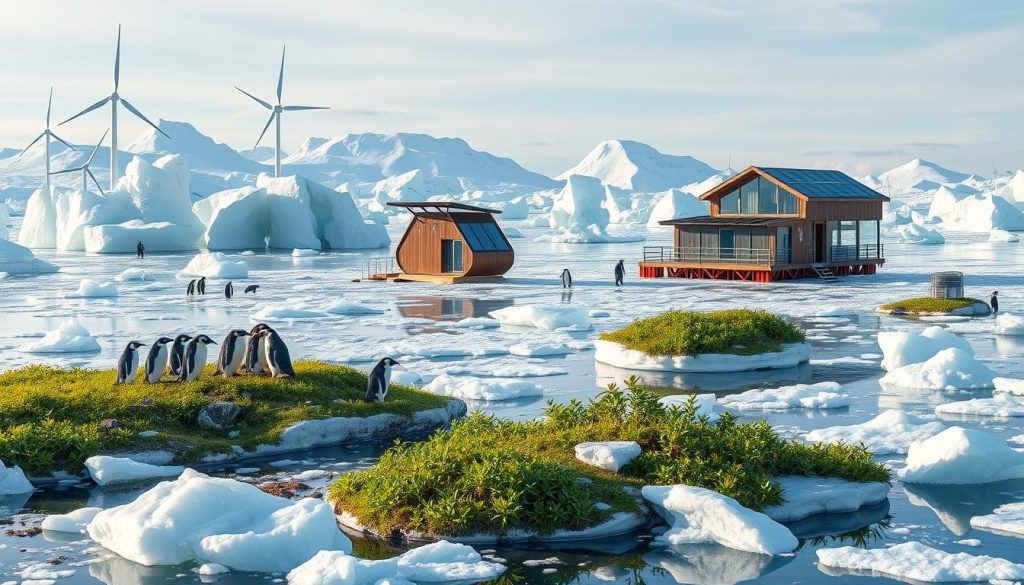
Starting an eco-friendly business in Antarctica means finding sectors that are good for the environment. This includes eco-tourism, renewable energy, and sustainable products. You can learn from other eco-startups in cold areas. These show how green businesses can work and help the environment.
Identifying Eco-Friendly Business Opportunities
Entrepreneurs should look into different areas for eco-friendly business ideas, such as:
- Eco-tourism projects that support responsible travel and wildlife care.
- Renewable energy projects, using the area’s natural resources.
- Sustainable products that meet local needs, cutting down on imports.
An in-depth market analysis will show which ideas are workable. It helps business owners meet both business and environmental goals.
Researching the Local Market Demand
Understanding local demands is key for an eco-friendly business. This means doing detailed market research. It helps in making products and services that the community will love. To do this:
- Check market potential by talking to locals and doing surveys.
- Find out who your potential customers are and what they like.
- Tweak your business plan to include local insights, for better relevance.
Talking to local people builds trust. This is very important for any eco-business in Antarctica.
Funding Your Eco-Friendly Venture in Antarctica
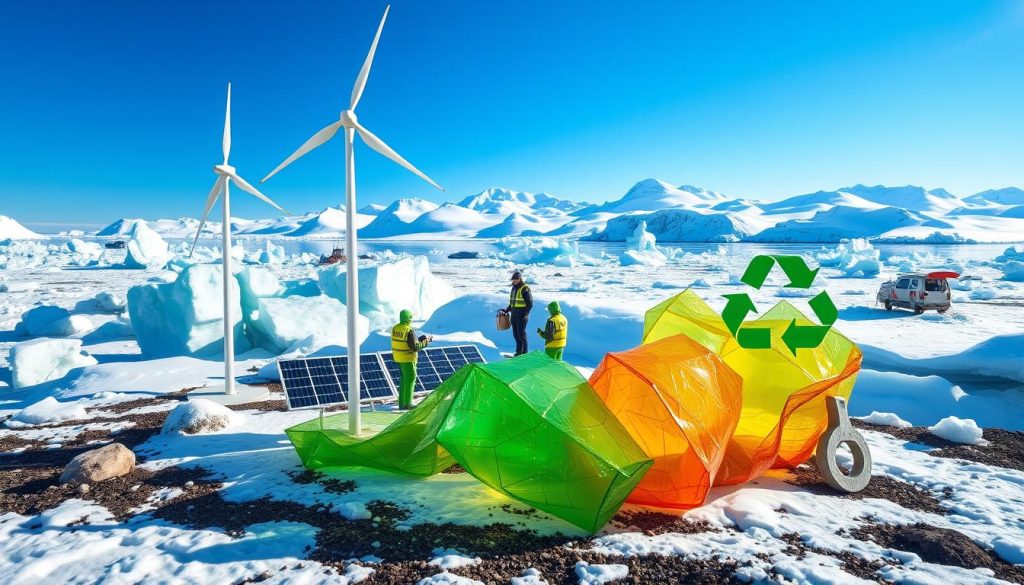
Starting an eco-friendly business in Antarctica needs a lot of money. You can find many ways to get this money, each helping in its own way. Grants for green projects are very helpful. They give you money that you don’t have to pay back, making the start easier.
Talking to eco-investors is also important for getting the money you need. These people or groups look for projects that care about the Earth and saving it. It’s key to show them why your business is good for the planet to get their support.
Another good source of funds are venture capitalists who like eco-friendly ideas. They have money to invest in businesses that want to make a positive impact on the environment. Working with companies that care about the Earth can also give you more chances to find money, especially through working together on projects.
- Focus on specific funding options like grants available for environmental initiatives.
- Build relationships with eco-investors who value sustainable practices.
- Explore venture capitalists with interests in eco-friendly projects.
- Consider partnerships with organisations committed to environmental sustainability.
Choosing the Right Sustainable Practices

Making sustainable choices is crucial for companies working in Antarctica, especially if they focus on renewable resources. These practices lower the harm to nature and make eco-friendly operations more likely to succeed in the long run. Adopting renewable energy like solar, wind, and hydro power is a key step.
Utilising Renewable Resources
Renewable energy is key to cutting costs and being sustainable. Investing in solar panels gives clean energy without using up Earth’s riches. Wind turbines are also great for getting energy in Antarctica. Plus, hydro energy from melting ice is another way to operate efficiently.
Here are some top methods seen in action:
- Using solar panels at research bases helps cut down on fossil fuel use.
- Adding wind power helps with electricity, especially when there’s a lot of wind in summer.
- Designing operations to use renewable energy well means making the most of what’s available.
Building Partnerships with Environmental Organisations
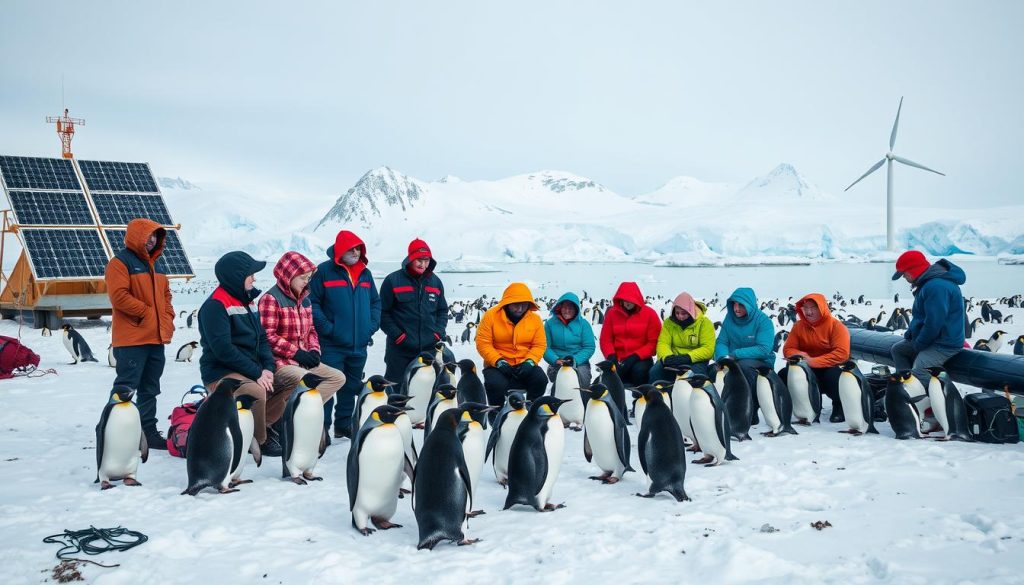
Creating ties with environmental organisations is key for businesses looking to be green in Antarctica. These partnerships boost reputation and offer shared resources, crucial in distant places. Companies can join forces with NGOs to match their goals with conservation efforts, making a bigger difference.
Many examples show the perks of teaming up. Eco-minded businesses in cold areas have partnered with well-known NGOs. They work to raise awareness about the environment and encourage green habits. Together, they focus on protecting animals, saving habitats, and fighting climate change.
- Access to expert knowledge and resources
- Enhanced public perception and brand loyalty
- Increased funding opportunities through collaborative projects
By working together, businesses and NGOs can achieve important conservation goals and get crucial support. This teamwork leads to sustainability in one of the planet’s most vulnerable areas.
Marketing Your Eco-Friendly Business
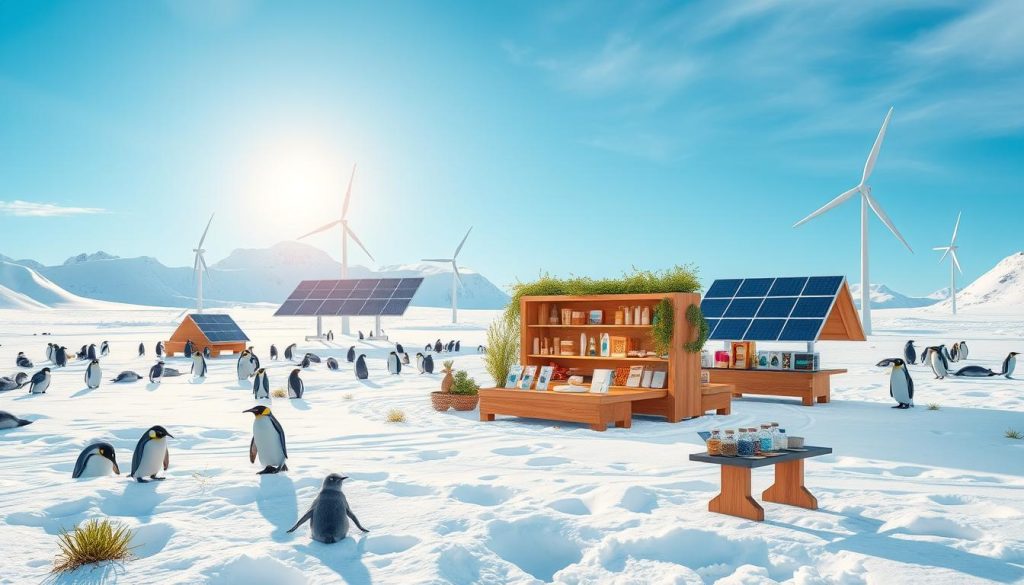
Marketing an eco-friendly business needs strong strategies. These should show your commitment to being green. Branding is key to stand out to green-minded shoppers. Your messages must be clear, highlighting your focus on caring for the planet.
Using social media platforms can help you reach more people. Sharing info about your green efforts draws in those who value eco-friendly choices. Storytelling about where your products come from shows their environmental benefit. This can attract customers.
Getting involved in local events or teaming up with green groups builds community ties. This connection makes your brand more relatable. Real-life stories of how your practices help the planet can be very effective.
Companies like Patagonia and The Body Shop show how it’s done. They use their ethical stance to draw in and keep customers. A strong eco-marketing plan boosts your visibility and highlights your green mission.
Challenges of Running a Business in a Harsh Climate
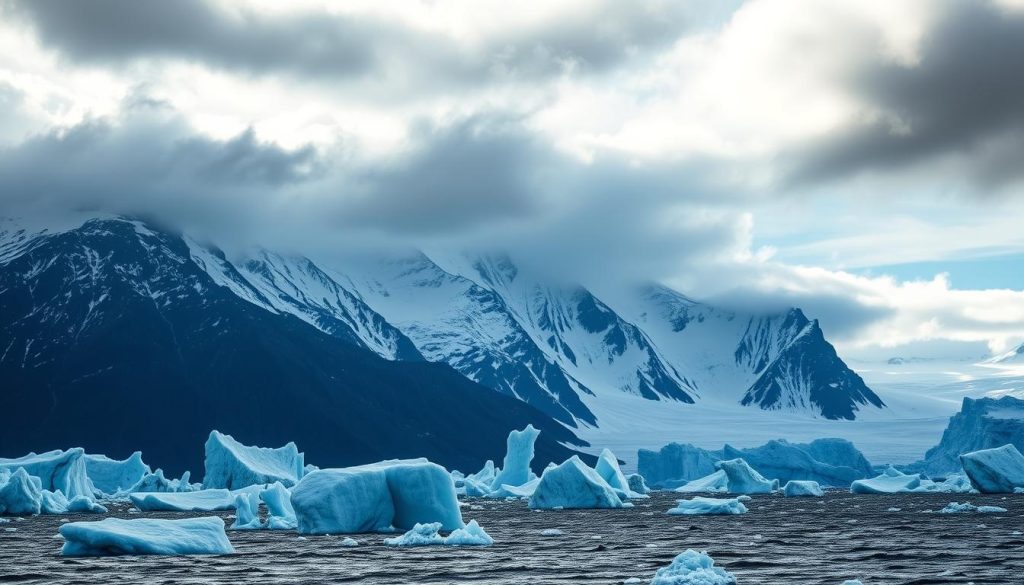
Running a business in Antarctica has many climate challenges. It needs a lot of planning and the ability to bounce back. Knowing about the extreme conditions is key for those who want to do well there. The hard weather calls for new ways to get ready for disasters, which must include being able to change when needed.
Adapting to Extreme Weather Conditions
Businesses need to make plans that can handle unexpected Antarctic weather. Sudden cold snaps and big storms are major risks. To stay safe, they often:
- Train staff often on what to do in emergencies.
- Buy equipment that can handle the tough weather.
- Keep an eye on weather reports to help make choices.
This forward-thinking approach helps keep people safe and stops work from stopping.
Logistical Considerations for Supplies and Resources
Getting supplies to Antarctica is tricky and requires smart planning. Firms must get what they need despite hard transportation and storage. Good strategies for getting resources include:
- Working closely with suppliers who know about Antarctic conditions.
- Using local expertise to make deliveries more efficient.
- Having backup plans for when things go wrong.
With these methods, companies can make sure they always have what they need to keep going.
Impact of Tourism on Antarctic Ecology
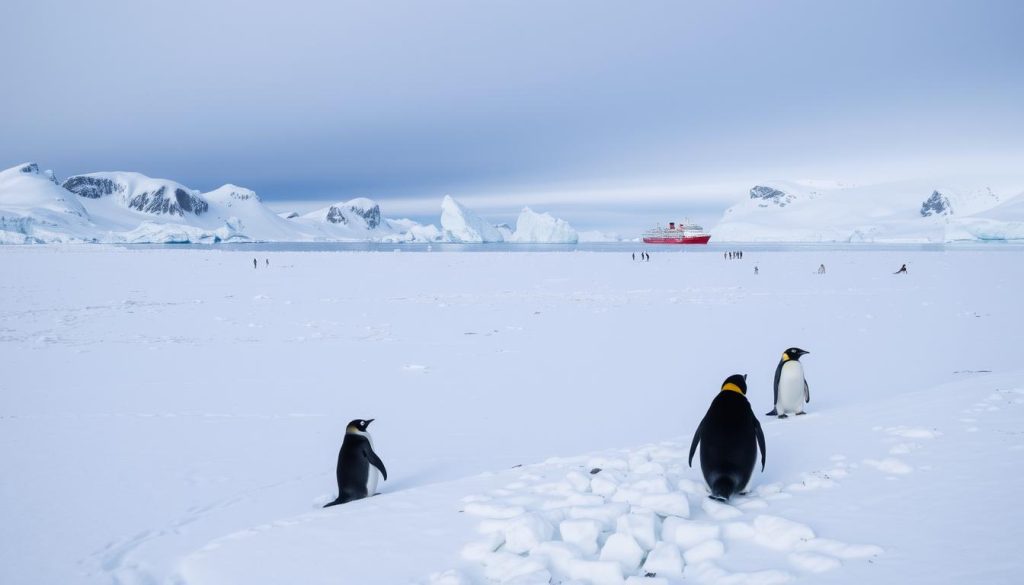
Tourism in Antarctica combines adventure with ecological responsibility. Thousands visit each year, attracted by pristine nature. But, this comes with economic benefits and ecological risks. As tourism grows, understanding its effect on ecology is vital.
The increase in visitors can disturb wildlife homes. Animals in icy landscapes may be bothered by people, changing their behaviours and survival. Ecosystem balances get shaky and need quick, sustainable tourism actions.
The mark left by tourists can last a long time. Issues like waste, transport, and building affect nature. Using sustainable tourism methods helps reduce harm. Set rules for visits, use green transport, and create wildlife guidelines to protect nature.
Teaching tourists is key to awareness. Realising why this area must stay unspoiled drives careful actions. Sustainable tourism principles ensure Antarctica stays beautiful for visitors to enjoy responsibly.
Strategies for Reducing Your Carbon Footprint
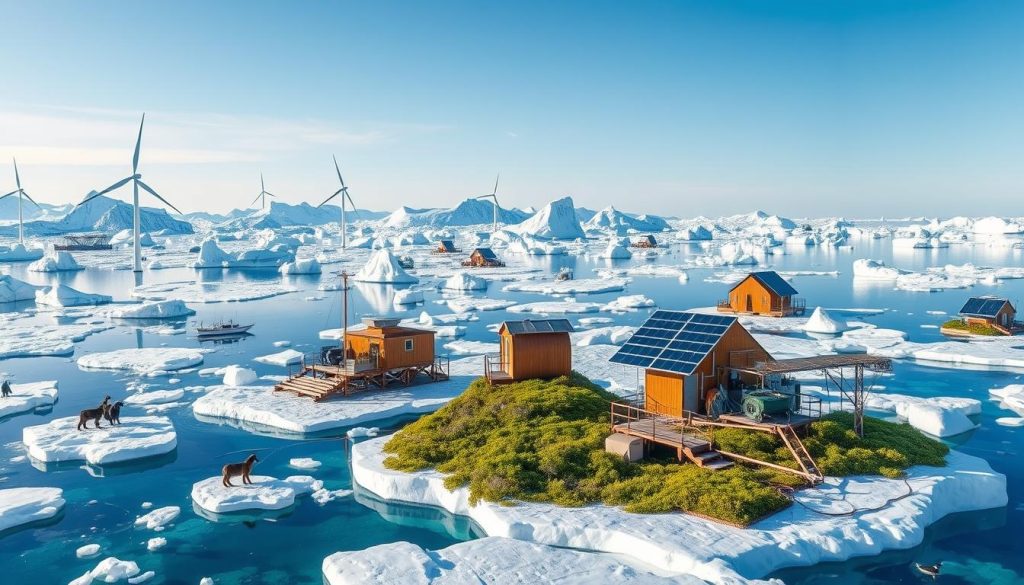
Making your business greener is essential, especially in places as untouched as Antarctica. Adopting energy-saving tech and green practices can help a lot.
One key method is to use renewable energy like solar or wind power. This cuts the need for fossil fuels and reduces harmful emissions. Many firms are now adding solar panels or wind turbines, showing their green commitment.
Minimising waste is another crucial step. Companies can start wide-ranging recycling programs and choose biodegradable materials. Moving away from single-use plastics and picking eco-friendly packaging helps reduce the carbon footprint greatly.
It’s important to measure and keep an eye on emissions. Regular checks help spot where improvements are needed. This helps businesses set clear, achievable green targets and stay truthful to eco-friendly promises.
- Invest in energy-efficient appliances and lighting systems.
- Establish a robust recycling system.
- Encourage telecommuting to decrease travel-related emissions.
- Utilise eco-friendly transport options for logistics.
When these strategies are put into action carefully, they lead to real change. Embracing these steps can enhance a company’s green image and appeal to eco-aware customers.
The Role of Technology in Sustainable Business Solutions

Technology is key in making businesses more eco-friendly. By using new advancements, companies can use less resources and harm the environment less.
For example, new monitoring systems help businesses keep an eye on how much resources they use and waste they produce. They can use data analytics to make smart choices. These tools make it easier for businesses to be sustainable every day.
- Renewable energy technologies like solar panels and wind turbines are changing how industries use energy. They help lessen our dependence on fossil fuels.
- Smart grids improve how energy is distributed, making it easier to save energy.
- Data analytics help businesses understand their usage patterns. This leads to less waste and better use of resources.
There are many success stories of businesses using technology to be more sustainable. These examples show us how tech can help the environment and still be profitable. It’s crucial for sustainable strategies to include technology solutions.
Networking with Like-Minded Entrepreneurs
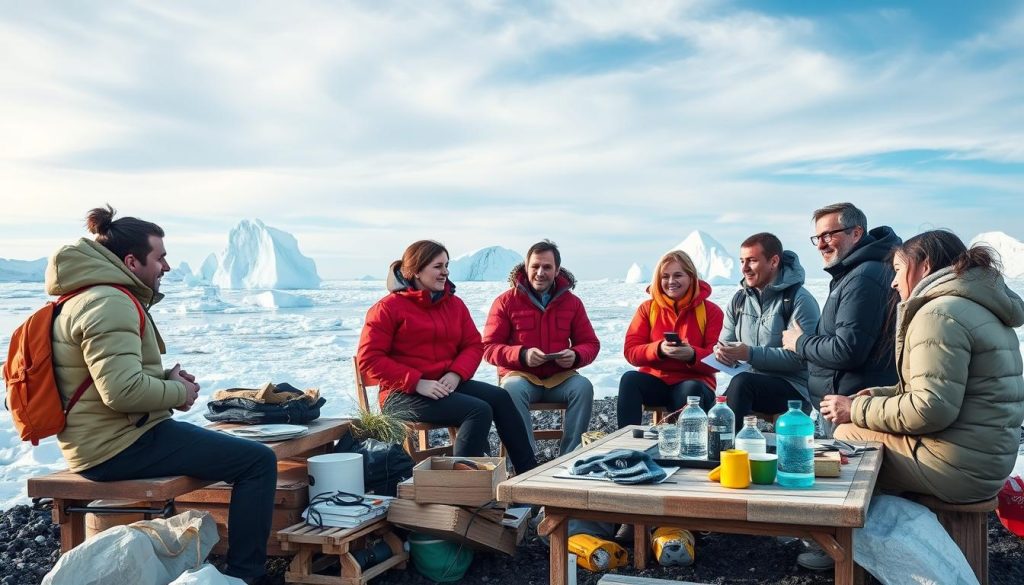
Networking effectively with eco-entrepreneurs is key to success. Building a network drives innovation and allows for sharing knowledge and resources. It also helps in creating partnerships that benefit everyone.
There are several great ways to network in the eco-friendly business world:
- Eco-business forums are perfect for sharing ideas.
- Sustainability conferences bring together a wide range of people.
- Online communities offer easy access to like-minded individuals.
Through collaboration, entrepreneurs can embark on joint ventures. This combines their strengths to make a real difference. Networking boosts understanding of trends and best practices, helping businesses grow in a tough market.
Future Trends in Eco-Friendly Business in Polar Regions
The world is starting to see how important it is to look after our environment. Because of this, eco-friendly businesses in places like Antarctica are getting more attention. There’s a growing demand for products and services that are kind to the earth. Entrepreneurs are now encouraged to start businesses that meet this need but also be careful not to harm the delicate polar regions. This shift in consumer attitudes opens up new chances for businesses that want to be both green and successful.
New green technologies will be key in creating these eco-friendly businesses. Using renewable energy, biodegradable materials, and smarter ways to handle logistics will help. These steps will make businesses run smoother and reduce their harm to the environment. Also, with stricter rules coming in to protect these areas, companies must follow new sustainability practices to stay ahead.
There is a big potential for starting new businesses in the polar regions. There are more chances now to start ventures like eco-tourism or sustainable fishing. By following these new eco-business trends, business owners can make a difference in preserving the polar environments. At the same time, they can build profitable businesses in some of the most extreme places on earth.

